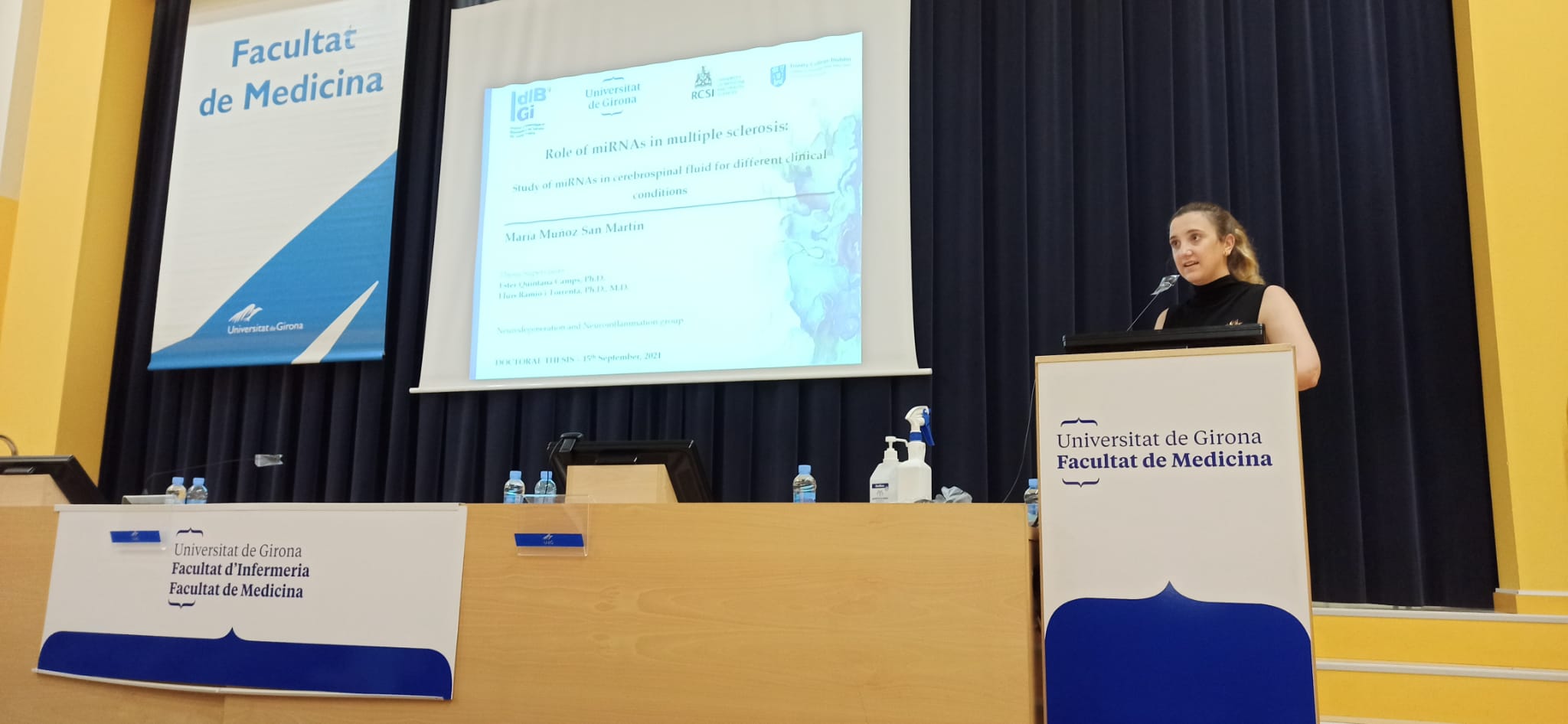
Last Wednesday 15/09/2021 at 10:30h María Muñoz read her doctoral thesis entitled: "Role of miRNAs in multilleno sclerosis: Study of miRNAs in cerebrospinal fluid for different clinical conditions", from the PhD programme in Molecular Biology, Biomedicine and Health of the University of Girona, directed by Dr. Lluís Ramió y Torrentà and Dr. Ester Quintana Camps.
Multiple sclerosis (MS) is the most common non-traumatic neurological cause of disability in young individuals, affecting more than 1 million people in Europe. It is considered a chronic inflammatory and neurodegenerative disease, characterized by the existence of demyelinated lesions in the central nervous system, infiltration of inflammatory cells in the brain and, axonal damage. The most common clinical subtype, known as relapsing-remitting MS (RRMS), is associated with an inflammatory burden, whereas 15% of individuals present primary progressive MS (PPMS), another clinical form characterized by demyelination and disability from the onset. The etiology is still unknown but it has been suggested that epigenetics is involved in the complex interaction between some genetic and environmental factors producing the pathology and the symptoms in MS. microRNAs (miRNAs), one of these epigenetic mechanisms, regulate gene expression post-transcriptionally. They also present many properties to be considered as promising biomarkers for different pathological conditions as they could be released into biological fluids. Over the last years, miRNA studies in MS, mainly focused on RRMS, have gained tremendous attention through the study of different biological samples.
In this doctoral thesis, specific miRNA signatures in different clinical and pre-clinical forms of MS are described. Open Array plates specifically directed to analyze cerebrospinal fluid (CSF)-enriched miRNAs have been designed and the most appropriate strategy for their analyses has been defined. Firstly, miRNA profiles in CSF and serum samples of PPMS individuals have been identified and the comparison of these clinical manifestations with an ex vivo demyelinating model has been proposed as an approach to further define the mechanisms involved in demyelinating and neurodegenerative processes. Secondly, the description of circulating miRNA profiles in CSF and plasma of radiologically isolated syndrome individuals has allowed to preliminary differentiate those who finally convert to MS. Thirdly, miRNA deregulation in RRMS depending on different clinical variables such as ethnicity, age at onset and disease activity has been studied in order to describe their potential role as informative biomarker. Finally, the expression of virus-encoded miRNAs in plasma samples of RRMS and control subjects has been explored.
Altogether, miR-21-5p, miR-20a-5p, miR-142-5p, miR-143-3p, miR-146a-5p and miR-448 are proposed as potential miRNA candidates involved in MS pathogenesis as their deregulation has been manifested in different sub-studies.